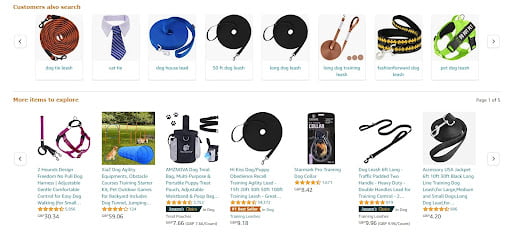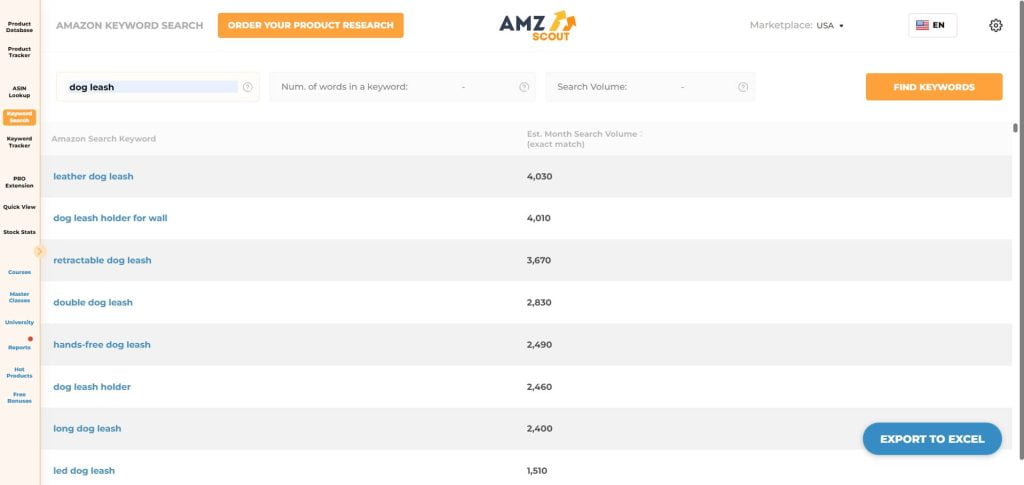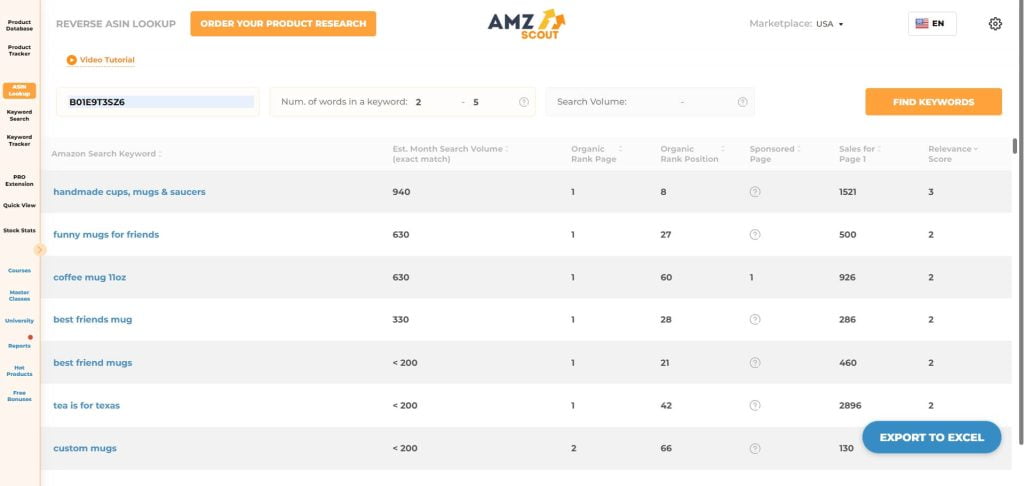An Introduction to Amazon Keyword Research
- November 22, 2021

Amazon sells more than 75 million products on its platform. To sort through this platform, it needs a robust search engine. Thankfully, Amazon delivers an impressive solution to find the right products.
The search engine is only expected to improve with the release of Amazon’s enhanced search tool: The A10 Algorithm.
What is the Amazon A10 Algorithm?
The Amazon A10 Algorithm is an enhanced search experience for users. It analyses the content people search for and does its best to determine buyer’s intent.
The A9 Algorithm puts more stock on sales rank while the A10 Algorithm emphasises being the most appropriate product. In this way, many topics (e.g., like search engine optimisation and creating an ideal product) have become incredibly important for attracting additional relevant users.
How to Use Amazon as a Keyword Research Tool
Understanding how to use Amazon’s search console is vital for Amazon sellers. Logging in on Amazon Seller Central and plucking the first few keywords from any PPC campaign isn’t enough.
Instead, you need to understand how to use Amazon as a keyword research tool. Your ultimate goal should be to find high-demand products, so check out these keyword research tools to get that done.
1. Using Amazon’s Search Bar for Keyword Suggestions
Amazon’s search bar is a powerful tool on its own merit. Customers type in a variety of things that Amazon continually tries to link them to.

Because Amazon’s ultimate goal is to increase sales, it is a tool built for sellers’ needs. For sellers, much of that use comes from the search suggestion feature.
Otherwise known as an autofill feature, it lets you see how knowing about these keywords enables you to structure content that utilises optimised long-tail phrases. So if you are a customer looking for the correct product variants, autofill will likely have one of those available.
Knowing about these keywords enables you to structure content that utilises optimised long-tail phrases. These long-tail keywords should be about four or five words long and they should meet the buyer’s requirements.
2. Analyse Top-Ranked Pages
Once you type in the variant keywords, Amazon generates a series of remarketing display ads and follows those who rank organically. It’s best to ignore the Amazon advertising, as those people pay for these slots.
PPC results are not earned through SEO practices, meaning they are less accurate for your targets.

Instead, focus on observing the top-ranking pages on Amazon. Look for common factors among these pages that enable them to rank well.
You’ll find that the bare minimums of optimisation involve high-quality images, well-written site copy, and a compelling offer. You can also apply this image to Google’s top-ranked pages to find out what works elsewhere.
Finding out what works enables you to optimise content with greater effectiveness. So take notes and look for similarities across all pages.
3. Amazon’s Suggested (Related) Items
When you look at product listings, you will see another list of substitute items on the page. These items are known as related products, and they also have excellent ranking potential to appear under top-ranking products.

Appearing on your competitor’s product listings is a sign that Amazon values your product above others. So utilizing their content strategies isn’t a bad position to be in.
You can also find adjacent products that are suitable for Amazon’s bundling feature. Upselling is known to increase revenue by 30%, so taking advantage of it can offer incredible earnings potential.
Regardless of upsale potential, being on almost any Amazon list signifies that your product is working. So look at things like price, search volume, images, and target keywords. It is vital to approach your observation with a holistic view.
Be aware that related items are not always the most successful. So you will want to combine data from both bestsellers, associated products, and those who meet a combination of short and long keywords.
4. Looking At Competitor’s Products
Your ultimate goal as an ecommerce operator is to stand out from your competition. Outselling your competition is one way you can measure your success.
So when you look up the best sellers on Amazon, be sure they are appropriate to your category. How you write a product description for baby products is very different from writing a product description for car speakers.
This is where third-party search tools like the AMZScout Reverse ASIN Lookup tool can come in handy.

A reverse ASIN lookup is when you take the product identifier of your competitor, plug it into a tool, and take the data from that tool to make your decision. Data can include keyword rankings, number of sales, and historical data.
You can use all of this data to make informed decisions on using their success against them. To find an ASIN, you have to look in the product details section. You can also find it in the URL of any product details page.
You can use AMZScout tools to analyze competitors in the following countries: USA, Canada, Australia, UK, Mexico, Italy, Germany, France, Spain, Japan, India.
Please note that Amazon does not support payments and shipments to the following countries: North Korea, Sudan, Cuba, Iran, Russia, Syria.
5. Use Amazon Keyword Search Tools
Outside of gathering data from competitor ASINs, there is almost always some gap that they missed. Identifying that gap is how many sellers outpace their competition.
So outside of relying on competitor data, you also need to rely on third-party keyword tools. Amazon doesn’t typically discuss SEO topics in any great detail, so you will need to supplement this information with a keyword research tool like AMZScout’s Keyword Research Tool.

A good keyword research tool enables you to find general keywords that are not dependent on your competitor’s data. That way, you can identify content gaps you can use to make sales.
Enough sales will enable your product to compete for more competitive keywords. Eventually, you can outpace much larger competitors using the strategy of hitting low-competitive keywords identified through keyword difficulty via a third party tool.
Conclusion
Reminding yourself that Amazon has a search engine is essential. This information can be helpful whether you sell on the platform or not. As the proud owner of an ecommerce business, it helps to use all the resources you can to outrank your competitors.
Our team at Fly High Media offers complete services addressing SEO, PPC, social media, and website design. As a business owner, you know it is vital to have multiple sales channels, so fill in the contact form below to ensure your channels are running at total capacity.
Contact Us
Cheshire (Head Office)
Manchester
Get in touch
Let’s find the best solution for your business



